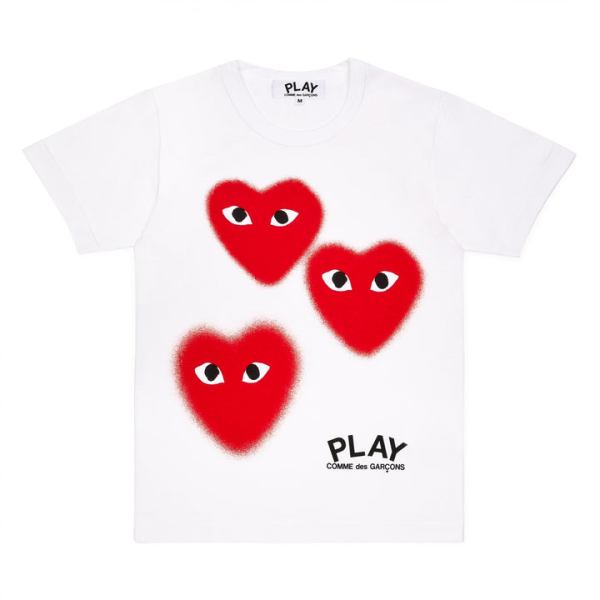The Legacy of Comme des Garçons
In the world of high fashion, very few names spark curiosity, admiration, and conversation quite like Comme des Garçons. Founded in Tokyo in 1969 by Rei Kawakubo, the label quickly earned a reputation for deconstructing conventional ideas of fashion. From its early days, the brand stood out for its asymmetrical cuts, monochrome palettes, and a distinct flair for the unconventional.
While many luxury fashion houses cater to the idea of beauty through perfection, Comme des Garçons has always been more interested in imperfection, asymmetry, and radical creativity. The result? A fashion empire that blends art and apparel like few others.
Beyond the Runway: Real-World Appeal
Although Comme des Garçons is known for its avant-garde runway collections, the brand has found widespread appeal through more wearable sub-lines. These lines retain the original spirit of the label while being easier to incorporate into daily wardrobes.
One of the most recognizable and accessible pieces in the collection is the Comme des Garçons shirt. Loved by both fashion enthusiasts and minimalists, the shirt usually features high-quality fabrics, crisp tailoring, and subtle design quirks that elevate it beyond a basic staple. Whether it’s the play on classic stripes or a unique cut on the hem, each piece manages to be simultaneously simple and striking.
CDG Converse: Streetwear’s Sweet Spot
Another massively popular item under the Comme des Garçons umbrella is the CDG Converse collaboration. First launched in 2009, this pairing between Comme des Garçons PLAY and Converse reimagined the classic Chuck Taylor sneaker. The playful heart logo with eyes, designed by artist Filip Pagowski, has since become iconic in streetwear and casual fashion.
The CDG Converse sneakers manage to maintain the integrity of the original Chuck Taylors while infusing them with a new layer of personality. They’re versatile, eye-catching, and carry a cool factor that appeals to both seasoned fashion veterans and younger street-style followers.
These sneakers perfectly exemplify how Comme des Garçons can translate high-concept design into everyday wear. It’s no wonder they remain one of the most coveted items in fashion collaborations to this day.
Sub-Labels and Their Influence
One of the reasons Comme des Garçons has sustained its influence over decades is its ability to diversify through sub-labels. Lines such as Comme des Garçons Homme, Comme des Garçons Noir, and Comme des Garcons PLAY allow the brand to appeal to a wide range of tastes and price points.
PLAY is perhaps the most accessible and commercially successful. With its signature heart logo, PLAY has become a streetwear staple, offering a variety of basics like t-shirts, hoodies, and cardigans that carry the brand’s DNA in a fun and recognizable way.
Meanwhile, Comme des Garçons Homme Plus stays closer to the avant-garde spirit of the main line, often pushing boundaries with sculptural silhouettes and innovative fabric combinations.
The Philosophy Behind the Fashion
Rei Kawakubo, the elusive genius behind Comme des Garçons, rarely gives interviews, but her design philosophy is deeply embedded in every collection. Her work challenges traditional ideas of beauty, gender, and form. She has often said that she creates “clothes that have never existed before,” and that ethos permeates the brand.
What makes Comme des Garçons stand out isn’t just its aesthetic but its ability to evoke emotion and thought. Wearing a Comme des Garçons piece isn’t about fitting in; it’s about standing out, questioning norms, and embracing individuality.
Comme des Garçons in Pop Culture
Over the years, Comme des Garçons has become a staple in music, film, and art circles. Celebrities like Kanye West, Rihanna, and Pharrell Williams have been seen sporting the label, often mixing its more wearable pieces with high-concept designs for bold fashion statements.
The brand’s presence in popular culture has only strengthened its relevance. Even those who may not know the origins of Comme des Garçons recognize the iconic heart logo or the instantly familiar cut of a Comme des Garçons shirt.
This cultural pervasiveness underscores the brand’s unique ability to remain niche and mainstream at the same time—a feat very few fashion houses have managed.
Innovation in Retail and Presentation
True to its unconventional spirit, Comme des Garçons has also revolutionized retail experiences. The brand’s Dover Street Market, an experimental multi-brand retail space, has locations in fashion capitals like London, Tokyo, and New York. Each location is a mix of boutique and art installation, providing an immersive experience that mirrors the brand’s avant-garde ethos.
These retail spaces feature limited drops, experimental displays, and collaborative pop-ups that keep fashion fans coming back. They serve not just as shopping destinations but as cultural hubs for the fashion-forward community.
Sustainability and Modern Challenges
In an age where sustainability is becoming increasingly important, Comme des Garçons is also beginning to address its role in creating a more responsible fashion ecosystem. Although the brand isn’t typically loud about its efforts, there’s a noticeable shift toward higher-quality, longer-lasting materials and a more thoughtful production process.
By encouraging consumers to buy fewer but better pieces—like a well-made Comme des Garçons shirt or durable CDG Converse sneakers—the brand subtly aligns itself with slow fashion principles, even without overtly branding itself as eco-conscious.
Final Thoughts: A Brand Beyond Trends
Comme des Garçons is not a brand that follows trends—it sets them, or better yet, it ignores them altogether. Its success lies in its authenticity and unwavering commitment to creativity. Whether you’re slipping on a pair of CDG Converse for a casual day out or dressing up in a sculptural jacket that looks like a walking piece of art, you’re making a statement.
In a world increasingly driven by fast fashion and algorithmic aesthetics, Comme des Garçons stands as a testament to what fashion can be when it refuses to compromise. It invites you to think, feel, and most importantly, express.
